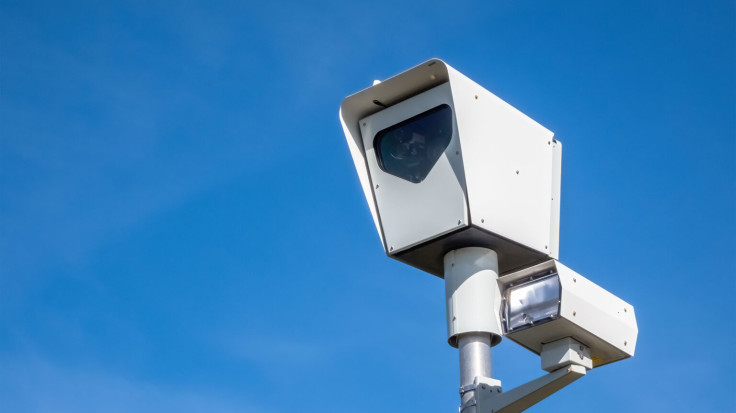NSW Average Speed Cameras Fines Hike to $3,000 — What Drivers Need to Know Now
Two key locations—parts of the Pacific and Hume Highways—will fine light vehicles up to $2,959 and six demerit points for speeding

Beware! New South Wales drivers have to follow strict traffic rules as significant changes are scheduled to determine how average speed cameras operate, with penalties or fines soaring to $3,000 (£2226.43).
Understanding these new rules is crucial to avoid unexpected penalties on key stretches of the road. Drivers in New South Wales, the state with the largest population, are being urged to reduce their speed and pay close attention as a significant change in road safety enforcement is just days away.
Hefty Fines Loom for Light Vehicles
Beginning 1 July, average speed cameras at two New South Wales locations will transition from a trial period to full enforcement. This means light vehicle drivers caught speeding could face significant penalties, including fines reaching up to $2,959 (£2195.59) and the accrual of six demerit points.
These cameras calculate a vehicle's speed across a defined road section rather than simply recording it at a fixed spot. The system notes when a vehicle enters and exits two distinct points and then determines if its average speed between those points exceeded the posted limit.
These cameras are situated on two significant routes: a 15-kilometre section of the Pacific Highway, found between Kew and Lake Innes on the Mid-North Coast of NSW, and a 16-kilometre stretch of the Hume Highway, located between Coolac and Gundagai in the state's south.
These two locations mark a significant change in New South Wales, as they are currently the only average-speed camera zones that will issue fines to car and motorcycle drivers. All other average-speed cameras across the state remain dedicated to monitoring heavy vehicles alone.
Transport for NSW (TfNSW) states that these measures aim to 'prevent speeding and reduce lives lost and serious injuries on the road network.' In line with New South Wales legislation, the penalties issued will differ based on the severity of the offence and the speed limit posted for that area.
Understanding NSW Speeding Penalties for Light Vehicles
Below is a summary of the fines and demerit points that apply to light vehicle drivers in New South Wales caught speeding, categorised by how much they exceed the limit:
- Up to 10 km/h over the speed limit:
For drivers with an unrestricted licence: a $145 (£107.69) fine and one demerit point.
For Learner or P1/P2 licence holders: a $145 (£107.69) fine and four demerit points.
- More than 10 km/h but not exceeding 20 km/h over the speed limit:
For drivers with an unrestricted licence: a $334 (£248.05) fine and three demerit points.
For Learner or P1/P2 licence holders: a $334 (£248.05) fine and four demerit points.
- More than 20 km/h but not exceeding 30 km/h over the speed limit:
All drivers: a $574 (£426.29) fine and 4 demerit points.
- More than 30 km/h but not exceeding 45 km/h over the speed limit:
All drivers: a $1,097 (£814.70) fine and five demerit points.
- More than 45 km/h over the speed limit:
All drivers: a $2,959 (£2197.53) fine and six demerit points.
It's important to note that these penalties are applied outside periods when double demerits are in effect. Additionally, fines become steeper for drivers caught speeding within a school zone.
Fine amounts are also anticipated to increase further from 1 July, consistent with adjustments based on the Consumer Price Index (CPI). For a comprehensive and up-to-date list of speeding penalties in New South Wales, drivers can refer to the official resource available via this link.
Road safety specialists assert that average speed cameras are highly effective in reducing collisions caused by speeding. A Transport for New South Wales spokesperson commented, 'We're committed to making NSW roads safer. Average speed safety cameras encourage drivers to stick to the speed limit over longer distances, not just when they see a camera.'
A Focus on the 'Everyday Driver'
However, leading road lawyer Hayder Shkara informed Yahoo that this initiative might disproportionately affect regular drivers who slightly exceed the limit due to actions like overtaking or distraction rather than targeting dangerous, reckless drivers.
'Average speed enforcement doesn't target the hoon doing 130 in a 60 zone who brakes when they see a cop,' he said.
'This can penalise minor, unintentional lapses, especially when driving for long distances,' he told Yahoo News. 'The blanket approach lacks nuance—something you'd expect more of if the goal is truly road safety rather than punishing drivers.'
'I also think the average speed cameras may encourage drivers to become overly fixated on maintaining speed rather than focusing on overall safety, like adjusting to conditions or anticipating hazards.'
Even though letters have already been dispatched to residents in the affected areas, alerting them to this upcoming change, and the NSW government has published information on its website and social media platforms, many drivers remain uninformed.
As active enforcement commences on 1 July, motorists are highly recommended to check their usual routes and ensure they consistently adhere to the posted speed limits.
© Copyright IBTimes 2025. All rights reserved.





















